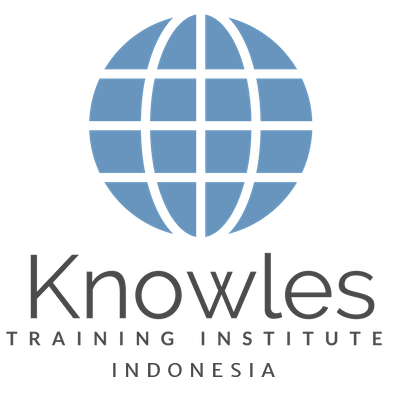Conflict Resolution & Management In The Workplace Training Course in Indonesia
Our corporate training course is also available in Jakarta, Surabaya, Bandung, Bekasi, Medan, Tangerang, Depok, Semarang, Palembang, Makassar, South Tangerang (Tangerang Selatan), Batam, Bogor, Pekanbaru, Bandar Lampung, Padang, Malang, Surakarta (Solo), Balikpapan, Denpasar, Samarinda, Cimahi, Yogyakarta, Banjarmasin, Serang, Jambi, Pontianak, Manado, Mataram, Batu, Ubud (Bali), Bali, Lombok, Surakarta, Manado, Makassar, Semarang, Balikpapan.
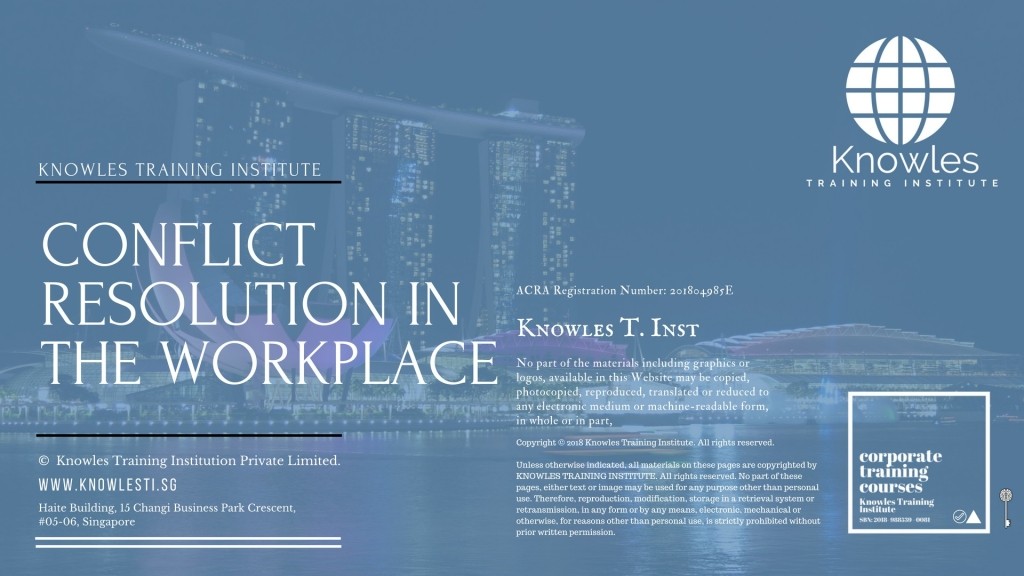
About This Conflict Resolution In The Workplace Training Course In Indonesia
Conflict Resolution In The Workplace Course In Indonesia
Conflicts are inevitable in the workplace and should not always be viewed as negativities. Even the most coordinated team face internal arguments. The key to resolving conflicts is to look at a problem from a positive perspective, treating it as a challenge that must be overcome to strengthen oneself or a team.
Who Should Attend This Conflict Resolution In The Workplace Course In Indonesia Workshop
This Conflict Resolution In The Workplace Course In Indonesia workshop is ideal for anyone who would like to gain a strong grasp and improve their Conflict Resolution In The Workplace.
All Staff Within An Organisation
Managers
Team Leaders
Executives
Assistants
Officers
Secretaries
Group Size For This Conflict Resolution In The Workplace Training Program In Indonesia
The ideal group size for this Conflict Resolution In The Workplace course In Indonesia is:
Minimum: 5 Participants
Maximum: 15 Participants
Course Duration For This Conflict Resolution In The Workplace Skills Course In Indonesia
The duration of this Conflict Resolution In The Workplace Course In Indonesia workshop is 2 full days. Knowles Training Institute Indonesia will also be able to contextualised this workshop according to different durations; 3 full days, 1 day, half day, 90 minutes and 60 minutes.
2 Full Days
9 a.m to 5 p.m
Conflict Resolution In The Workplace Course In Indonesia Benefits
Below Is The List Of Course Benefits Of Our Conflict Resolution In The Workplace Course In Indonesia
- Understand How Conflict Arises
- Understand How Conflict Can Be Resolved
- Understand Why Conflict Should Be Resolved
- Learn How To Avoid Conflict Altogether
- Identify People Prone To Conflict
Conflict Resolution In The Workplace Course In Indonesia Objectives
Below Is The List Of Course Objectives Of Our Conflict Resolution In The Workplace Course In Indonesia
- Develop An Appreciation For When Everyone Agrees
- Understand That Conflict Is Often Inevitable And Needs Resolving
- Conduct Assessments On How To Resolve Conflict Without Aggression
- Establish A Forum In Which People Can Bring Their Conflict Forward For Help Resolving It
- Recognise The Trouble That Arises From Leaving Conflict Unresolved
- Identify The Things That Cause Conflict To Arise And Monitor It
Course Content For This Conflict Resolution In The Workplace Training Course In Indonesia
Below Is The List Of Course Content Of Our Conflict Resolution In The Workplace Training Course In Indonesia
Conflict Resolution Course In Indonesia – Part 1
- What is Conflict?
- The Random House Dictionary defines conflict as, “to come into collision or disagreement; be contradictory, at variance, or in opposition; clash.” Some instances of conflict can include two sales representatives are disputing over who gets the latest customer, or a team of employees is upset with their manager over a recent scheduling change.
- What is Conflict Resolution?
- The term “conflict resolution” means how you solve conflicts. Although there are many processes available, we have developed one method that you can adapt to any situation. You will even be able to use these tools to prevent conflict and to help others work through conflict.
- Understanding the Conflict Resolution Process
- Conflict can come in many kinds, and our process will help you in any circumstance. Below, you can find a brief overview of how we are going to spend most of this workshop. Although we have outlined the several conflict resolution phases in a particular order, that does not mean that you have to use all the steps all the time.
Conflict Resolution Course In Indonesia – Part 2
- Collaborating
- We will use this approach during this workshop. With the collaborating approach, the parties work together to develop a win-win solution. This approach encourages assertiveness (rather than aggressiveness or passiveness
- Competing
- With an aggressive approach, the person in conflict takes a firm stand. They compete with the other party for power, and they typically triumph (unless they are up against someone else who is competing!) This style is often seen as aggressive, and can often be the cause of other people in the conflict to feeling injured or stepped on.
- Compromising
- With the compromising approach, every person in the disagreement gives up something that contributes towards the conflict resolution. This style is appropriate when a decision requires to be made sooner rather than later (meaning the situation is critical but not urgent). This style is not applicable when a wide variety of essential needs must be met.
Conflict Resolution Course In Indonesia – Part 3
- Accommodating
- The accommodating style is one of the most passive dispute resolution styles. Using this technique, one of the parties in conflict gives up what they want so that the other party can have what they want. In general, this style is not very useful, but it is appropriate in certain scenarios.
- Avoiding
- The final approach in the TKI is to avoid the conflict. People who practice this style tend to accept decisions without issue, avoid confrontation, and delegate complex choices and tasks. Avoiding is another passive method that is typically not effective, but it does have its uses.
- Neutralising Emotions
- Before commencing the conflict resolution process, both parties must accept that they want to resolve the conflict. Without this crucial buy-in step, achieving a win-win solution is close to impossible. Once participants have agreed to resolve the dispute, it is essential to neutralise as many negative emotions as possible.
Conflict Resolution Course In Indonesia – Part 4
- Setting Ground Rules
- Ground rules provide a structure for people to resolve their dispute. Ground rules should be established at the commencement of any conflict resolution process. They can be very short or very detailed – whatever the situation necessitates.
- Choosing the Time and Place
- The right time and place is often a crucial part of resolving conflict. Trying to solve a significant team issue five minutes before the end of the shift just is not going to work – people are going to be focused on going home, not on the problem. When possible, choose a quiet place to discuss the conflict.
- What Do I Want?
- To begin, distinguish what you personally want out of the conflict. Try to say this positively. Some examples are “I want a fair share of all new customers” or “I want a better working relationship with my manager.”
Conflict Resolution Course In Indonesia – Part 5
- What Do They Want?
- Next, find out what the person that you are in disagreement with wishes. Try to express this positively. Explore all the aspects to maximise your likelihoods for mutual gain. These framing questions will help you begin the process: what does my opponent need? What does my opponent want?
- What Do We Want?
- Now that you have distinguished the demands and needs of both parties look for areas of overlap. Those will be the starting points for building mutual ground.
- Finding Common Ground
- We have already discussed finding common ground when exploring each side’s wants and needs. With these tools, you should be able to find common ground even before the conflict arises.
Conflict Resolution Course In Indonesia – Part 6
- Building Positive Energy and Goodwill
- There are often many negative emotions correlated with conflict. No wonder conflict makes many people upset and troubled and often results in negative feelings like anger and disappointment. If you can alter that negative energy into positive energy to help develop goodwill with the person that you are in dispute with, resolving the difference will be much easier.
- Strengthening Your Partnership
- Making the transition from adversaries to problem-solving teammates is one of the most powerful conflict resolution means. We have already discussed ways to establish a common ground to help bridge the gap between you and the person having the dispute. These tools are a great start, but there are some additional things that you can do to sustain and strengthen that partnership.
- Examining Root Causes
- Once the foundation has been set, it is essential to look at the root causes of the conflict. One approach to do this is through simple verbal investigation. This involves continually asking “Why?” to get to the root of the problem.
Conflict Resolution Course In Indonesia – Part 7
- Creating a Cause and Effect Diagram
- Another method of examining root causes is to create a cause and effect diagram (also known as a fishbone diagram) with the person that you have the conflict. To start, draw a horizontal arrow pointing to the right on a large sheet of paper. At the end of the arrow, write down the problem.
- The Importance of Forgiveness
- Forgiveness is a crucial concept in conflict resolution. Forgiveness does not mean forgetting that the conflict happened or erasing the emotions that it created. It does mean accepting that the dispute occurred. Accepting and working through how it made you feel, admitting the consequences that it had, and letting those actions and outcomes exist in the past.
- Identifying the Benefits of Resolution
- There is no doubt about it – conflict resolution can be hard work. Efficient conflict resolution digs deep into the issues, often exploring unfamiliar territory, to resolve the core conflict and prevent the problem from reoccurring.
Conflict Resolution Course In Indonesia – Part 8
- Generate, Do not Evaluate
- To start, create ideas for resolving the symptoms of the conflict. Then, move on to the root cause and increase your list of ideas. Do not be hesitant to throw out wacky ideas or to ask, “What if?” Remember, this stage is about what you can do, not what you wish to do.
- Creating Mutual Gain Options and Mulitple Option Solutions
- Once you have a good list of options, look over the list, and execute some basic evaluation. Cross off selections that are an absolute no-go for either party. Highlight options that provide gains for both parties.
- Digging Deeper into Your Options
- When the list has been narrowed down, dig deeper into each selection and distinguish the following:
- The effort for each possibility (perhaps on a scale of one to ten)
- The consequence for each option (also on a scale of one to ten)
Conflict Resolution Course In Indonesia – Part 9
- Creating Criteria
- For the time, set aside your list of alternatives. It is time to create a framework to evaluate those options. Try not to think about the several options as you create the criteria. Focus instead on the demands and needs of both parties.
- Creating a Shortlist
- Once the criteria have been devised, take out the list of solutions. Eliminate any solutions that do not match the must-have criteria that you and your partner identified. After this process, you should have a small, manageable list of potential solutions.
- Choosing a Solution
- Now, pick a final solution. Remember, you can often combine various options for even greater success! Here is a checklist to evaluate the preferred solution. Is it a win-win solution for everyone affected? Are all needs provided for?
Conflict Resolution Course In Indonesia – Part 10
- Building a Plan
- Now, let us formulate a plan to put the solution in action. The complexity of this plan should vary with the complexity of the situation. For simple conflicts, you may construct an agreement like this: “Janice and I will take turns taking new customers, and we will make sure that we let each other know when this happens.
- Evaluating the Situation
- To begin, we will combine all the groundwork into a single step. Take a moment to calm down and deal with your emotions. Study the possible positive outcomes of the conflict.
- Choosing Your Steps
- Now, let us work through stages four and five. Study the current conflict. Is it truly the root cause, or is it just a symptom of a more significant problem?
Conflict Resolution Course In Indonesia – Part 11
- Creating an Action Plan
- Once you have some ideas on how to resolve the conflict, do a quick evaluation. What do you want and need out of the solution? What might the other party need? Use these to plan out a solution.
- Using Individual Process Steps
- In this workshop, we have outlined the multiple conflict resolution phases in a particular order and with a specific grouping. That does not indicate that you have to use all the stages all the time. Most of the items we have discussed can be practised individually as conflict prevention or resolution tools.
- Stress and Anger Management Techniques
- There is no doubt about it – dealing with conflict can be tough on the mind and the body. Being well equipped with some stress and anger management techniques can help you stay cool during the conflict resolution process. Nothing is going to get resolved when either (or both) parties are angry and upset.
Conflict Resolution Course In Indonesia – Part 12
- The Agreement Frame
- The Agreement Frame can be practised in any situation to explain your viewpoint in an assertive, non-confrontational way, without watering your position down. It is designed to promote discussion and information sharing between all parties. Although it can be used in various situations, it is particularly useful in conflict resolution.
- Asking Open Questions
- When plausible, use the five W’s or the H to ask a question. These questions promote discussion, self-evaluation, and open conversation. Some useful questions for conflict resolution include:
- What happened?
- Why do you feel that way?
Conflict Resolution In The Workplace Course in Indonesia Value Added Materials
Each participant will receive the following materials for the Conflict Resolution In The Workplace course In Indonesia
Conflict Resolution In The Workplace In Indonesia Learner’s Guide
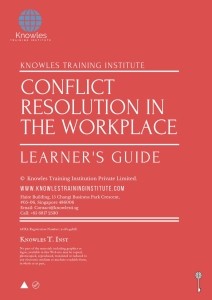
Conflict Resolution In The Workplace Course In Indonesia Handouts
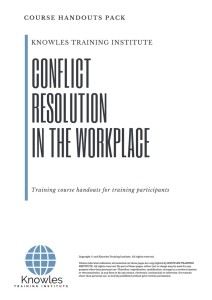
Conflict Resolution In The Workplace Course In Indonesia PPT Slides Used During Course
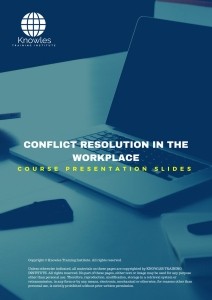
Conflict Resolution In The Workplace Course In Indonesia Certification
Each course participant will receive a certification of training completion

Course Fees For Conflict Resolution In The Workplace Training Course In Indonesia
There are 4 pricing options available for this Conflict Resolution In The Workplace training course In Indonesia. Course participants not in Indonesia may choose to sign up for our online Conflict Resolution In The Workplace training course In Indonesia.
- USD 1,019.96 For a 60-minute Lunch Talk Session.
- USD 389.96 For a Half Day Course Per Participant.
- USD 629.96 For a 1 Day Course Per Participant.
- USD 854.96 For a 2 Day Course Per Participant.
- Discounts available for more than 2 participants.
Upcoming Conflict Resolution In The Workplace Training Course In Indonesia Schedule
Contact us for the latest Conflict Resolution In The Workplace course In Indonesia schedules:
Email: contact@knowlesti.id
Message:
Conflict Resolution In The Workplace Course In Indonesia Brochure
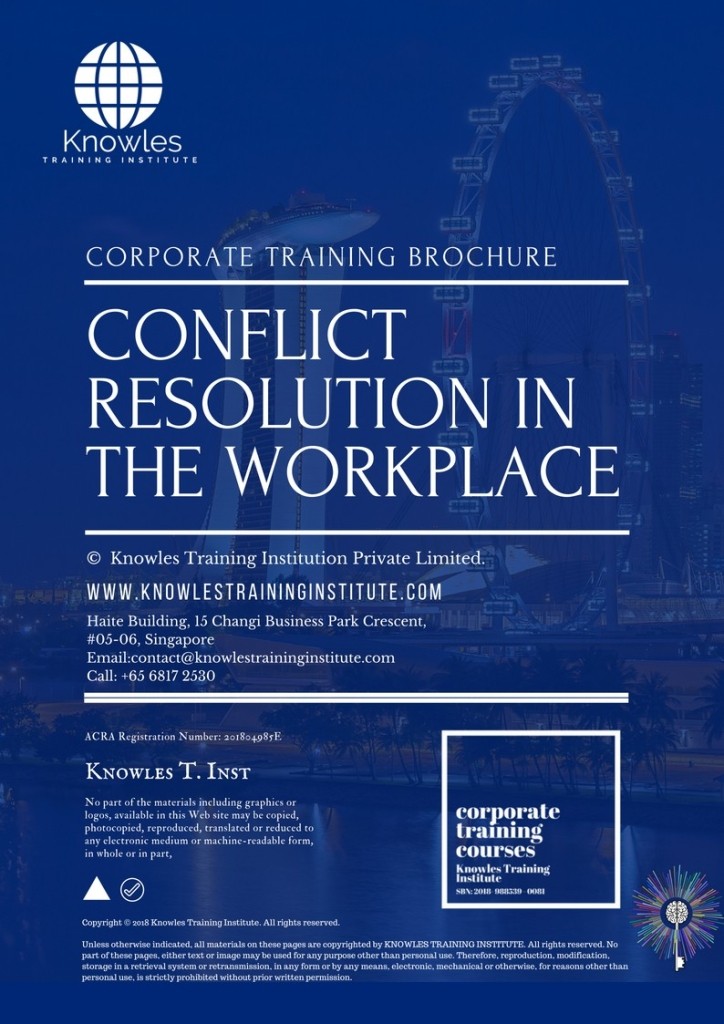
Request for this Conflict Resolution In The Workplace course In Indonesia brochure. Fill up the short information below and we will send it to you right away!
Post Training Support: A vast majority of training does not have any effect beyond 120 days. To work, training has to have a strong pre- and post-training component. Post-training reinforcement helps individuals to recall the understanding and ask questions.
Blended Learning: Learning does not occur in the classroom. Virtually everybody prefers distinct ways of learning. Successful learning should have a multi-channel, multi-modal strategy.
- We Understand The Industry: We’ve got a profound comprehension of the business, business design, challenges, strategy and the that our participants are in and have designed the courseware to cater to their professional needs.
- Course Content: Knowles Training Institute’s material is relevant, of high quality and provide specific learning results. Participants will leave the training course feeling as they have gained a strong understanding and will also be in a position to execute what they have learned sensibly.
Course Development — The workshop modules follow a systematic and logical arrangement. This structure helps to ensure that the course material allows the facilitators to deliver the course in a logical arrangement. Consider the subjects as building bricks into learning, our facilitators slowly build towards a comprehensive picture of this entire topic.
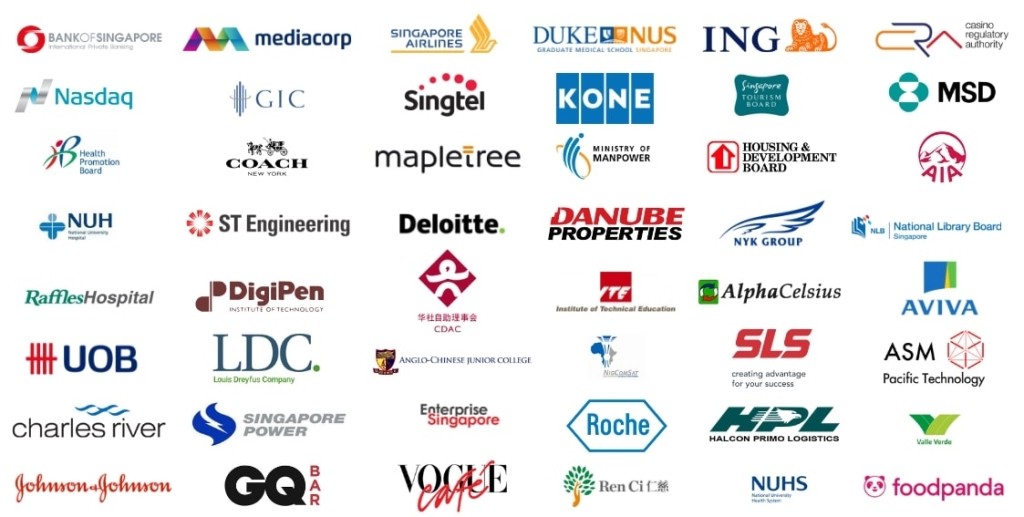
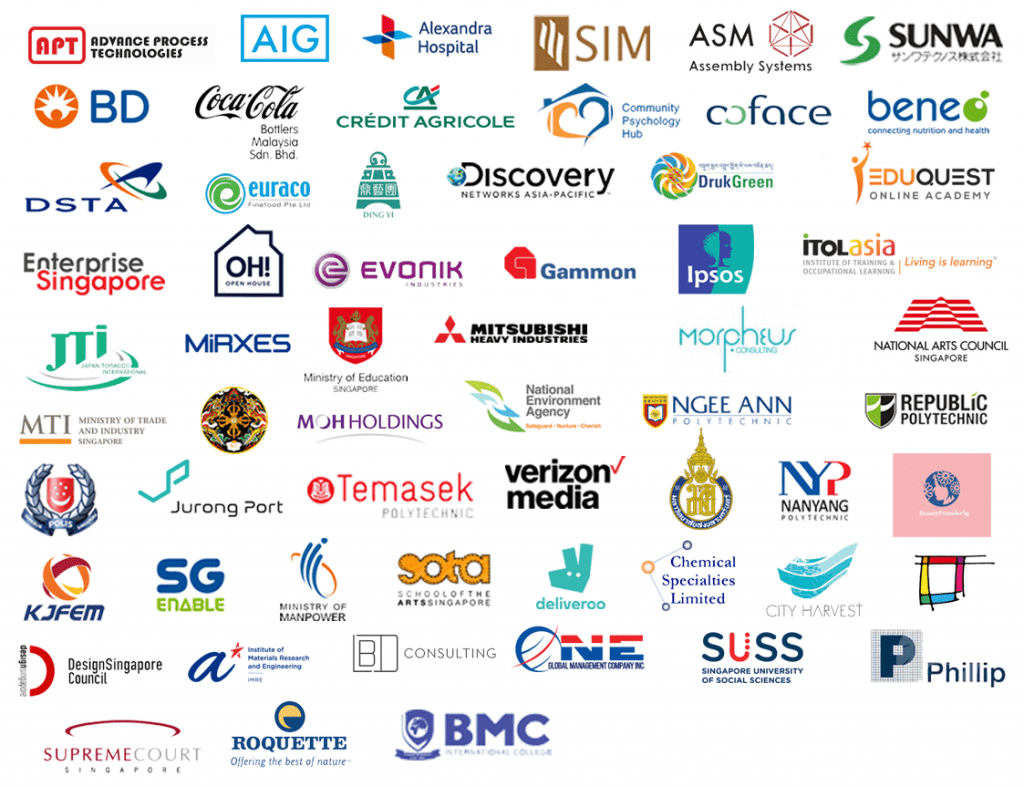
Course Enquiries
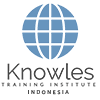
Fill up the form and we will get back to you in less than 1 working day.
Alternatively, give us a call to have one of our training consultants contact you. Our corporate training courses can be contextualized to meet your organization’s training needs. Leverage on our large pool of professional trainers and consultants for your organization’s training needs.
Email: contact@knowlesti.id
We Guarantee 100% Privacy. We Respect Your Privacy. Your Information Will Never Be Shared.
